We put the Fairphone 4 through our rigorous DXOMARK Audio test suite to measure its performance both at recording sound using its built-in microphones, and at playing audio back through its speakers.
In this review, we will break down how it fared in a variety of tests and several common use cases.
Overview
The Fairphone 4, like previous models in this eco-conscious line, is modular, and set up so that users can easily replace the battery and some other parts themselves. Parts and raw materials are as much as possible sourced responsibly, according to the company. Running on Android 11, the device is powered with the mid-range Snapdragon 750G chipset and is 5G ready. On the audio front, the device has two speakers, one top center and one bottom right. Among its peers in this price range (about 650 euros), its global score was among the lowest, notching a 53, which matches the score of the Vivo X51 5G. In playback, the Fairphone 4 is functional. Balance is good, and voices are in general intelligible. But the timbre is very midrange focused — low end is desperately absent and high end isn’t great either — and at maximum volume artifacts become glaring. As a recording device, the Fairphone 4 is functional with some flaws in most use cases. But the device’s memo app was deeply flawed across use cases and attributes, bringing down the overall score. In some cases, the recordings were simply unintelligible.
Key audio specifications include:
- Two speakers, one top center, one bottom right
- No earphone jack, but there is a USB-C port
Scoring
Sub-scores and attributes included in the calculations of the global score.

Fairphone 4


 198th
198th 37th
37thPlayback
Cons
- Lack of support for 24-bit audio
- Very midrange-focused timbre, lacking low- and high-end extension
- Occasional resonance on the low mids, depending on the content
- Maximum volume-induced distortion and pumping, reducing the spectrum on the low side
Recording
Pros
- Correct envelope in loud (high sound-pressure level) scenarios
- Correct balance when recording videos indoor
Cons
- Very poor timbre in memo recording
- Poor handling of noise-canceling
Test summary
About DXOMARK Audio tests: For scoring and analysis in our smartphone audio reviews, DXOMARK engineers perform a variety of objective tests and undertake more than 20 hours of perceptual evaluation under controlled lab conditions.
(For more details about our Playback protocol, click here; for more details about our Recording protocol, click here.)
The following section gathers key elements of our exhaustive tests and analyses performed in DXOMARK laboratories. Detailed performance evaluations under the form of reports are available upon request. Do not hesitate to contact us.
Playback
Fairphone 4
163
DXOMARK engineers test playback through the smartphone speakers, whose performance is evaluated in our labs and in real-life conditions, using default apps and settings.
As a playback device, the Fairphone 4 scores at the bottom end of its price-range group. In terms of timbre, treble is a positive, even if lacking high end. It remains smooth, clear, not aggressive. Midrange is sometimes boxy, and resonant in the low mids, imparing voice clarity. Kick and bass information are not well rendered at all. The lack of low-end extension is the most obvious defect in this attribute. When playing games and watching moves, the lack of low-end extension impairs the sensation of punch. Dynamics in general are below par. Attack is soft in most use cases. Bass precision is surprisingly adequate when gaming, listening to music, or watching a movie. In the spatial attribute, the Fairphone 4 presents limited wideness, barely extending beyond the physical dimensions of the device, and localizability is not well defined. On a positive note, balance is well centered and distance perception is on target. Voices in movies and spoken content are at screen position. When playing games, spatial performance is average, and localizability doesn’t impair playability. At maximum volume, the device doesn’t become “harsh” sounding, but compression tends to amplify the low-end extension and accentuate the midrange-centric timbre. The first volume step is barely discernible. The device didn’t score well in the artifacts attribute either. Distortion emerges at high volumes, accompanied by obvious pumping. On the technical side, aliasing and frequency resonances are recurring problems.
Listen to the tested smartphone’s playback performance in this comparison with some of its competitors:

Timbre
Fairphone 4
158
The Timbre score represents how well a phone reproduces sound across the audible tonal range and takes into account bass, midrange, treble, tonal balance, and volume dependency. It is the most important attribute for playback.

Dynamics
Fairphone 4
149
The Dynamics score measures the accuracy of changes in the energy level of sound sources, for example how precisely a bass note is reproduced or the impact sound from drums.
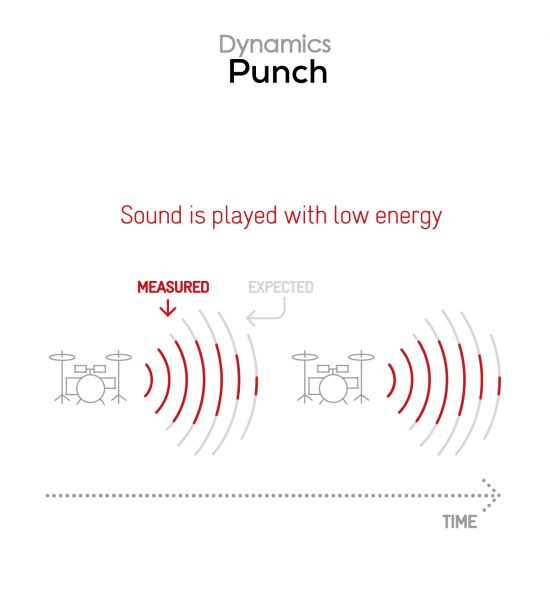
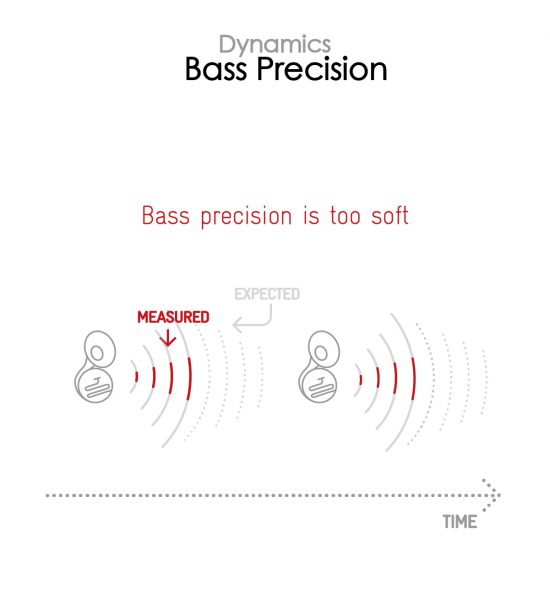

Spatial
Fairphone 4
162
The sub-attributes for spatial tests include pinpointing a specific sound's location, its positional balance, distance, and wideness.

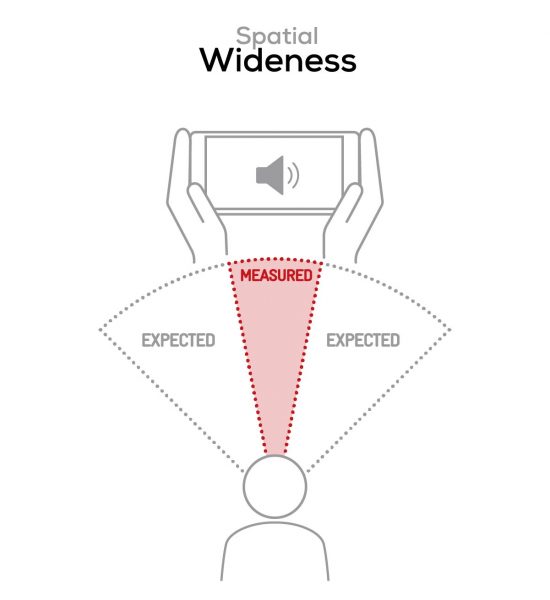

Volume
Fairphone 4
162
The Volume score represents the overall loudness of a smartphone and how smoothly volume increases and decreases based on user input.
| Hip-Hop | Classical | |
| Fairphone 4 | 75.4 dBA | 71.2 dBA |
| Oppo Reno6 Pro 5G (Snapdragon) | 73.9 dBA | 68.8 dBA |
| Oppo Find X3 Neo | 76.5 dBA | 71.8 dBA |

Artifacts
Fairphone 4
157
The Artifacts score measures the extent to which the sound is affected by various types of distortion. The higher the score, the less the disturbances in the sound are noticeable. Distortion can occur because of sound processing in the device and because of the quality of the speakers.
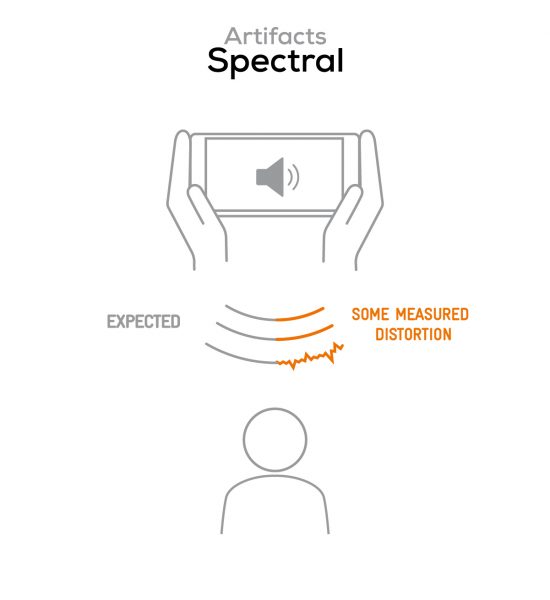
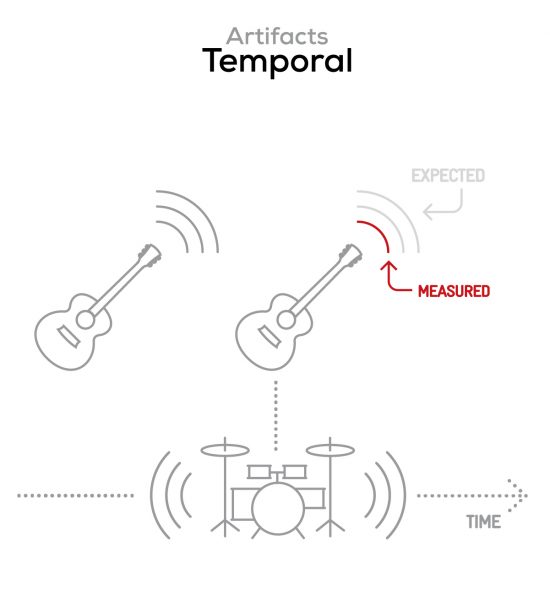
Recording
Fairphone 4
160
DXOMARK engineers test recording by evaluating the recorded files on reference audio equipment. Those recordings are done in our labs and in real-life conditions, using default apps and settings.
As a recording device, the Fairphone 4 comes in at the absolute bottom in this price range with a score of 45. Among all devices tested for recording, it’s near the bottom as well. In the timbre attribute, the problems vary from application to application. When shooting life video (rear camera) in an interior space, tonal balance is correct despite a lack of warmth in voices, Treble is good, but midrange sounds hollow, with a lack of low mids. In the urban scenario, voices sound really canny, focused on the high mids and upper trebles. In selfie video, tonal balance is functional, but the timbre is focused on high mids as in life video. When it comes to the memo app, recordings are really inadequate because of a poor file layout. Voices are barely understandable. There are no treble notes at all, just a sloppy midrange. In dynamics, the signal-to-noise ratio is correct in life and selfie video. In the memo app, again a problem, the envelope is severely impaired. Plosives are not sharp at all. In the high sound-pressure-level scenario (an electronic music concert), the envelope is correct despite slight compression that hinders quick transients like snares. In the spatial attribute, localizability is correct in the video applications, although the audio scene is quite narrow in life video and non-existent in selfie video. Memo app is again a drawback: Localizability and wideness are nonstarters, and distance rendering is unrealistic. As for artifacts, some clipping was noticed on the high SPL scenario and on shouting voices in the video applications. In the background attribute, noise-canceling triggers after 10 seconds of recording in loud environments with either video application. That completely impairs background restitution, which becomes muffled and not natural at all. When the memo app is used, background is simply non-existent because of the poor quality of recordings. A bright spot: Background is rendered correctly in the at-home scenario.
Here is how the Fairphone 4 performs in recording use cases compared to its competitors:

Timbre
Fairphone 4
147
The Timbre score represents how well a phone captures sounds across the audible tonal range and takes into account bass, midrange, treble, and tonal balance. It is the most important attribute for recording.

Dynamics
Fairphone 4
146
The Dynamics score measures the accuracy of changes in the energy level of sound sources, for example how precisely a voice's plosives (the p's, t's and k's, for example) are reproduced. The score also considers the Sound-to-Noise Ratio (SNR), for example how loud the main voice is compared to the background noise.
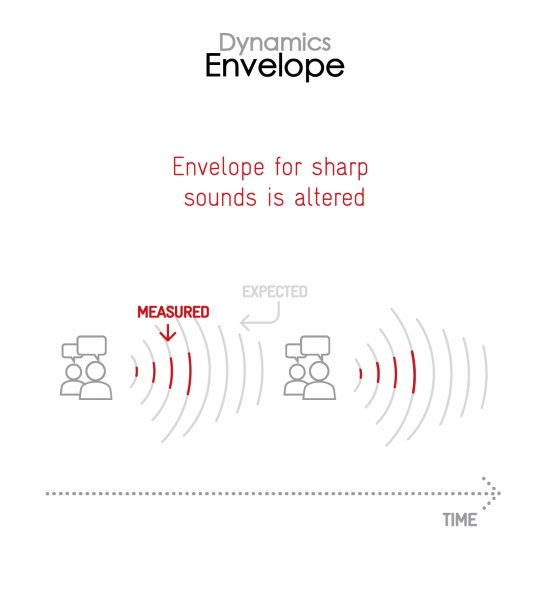
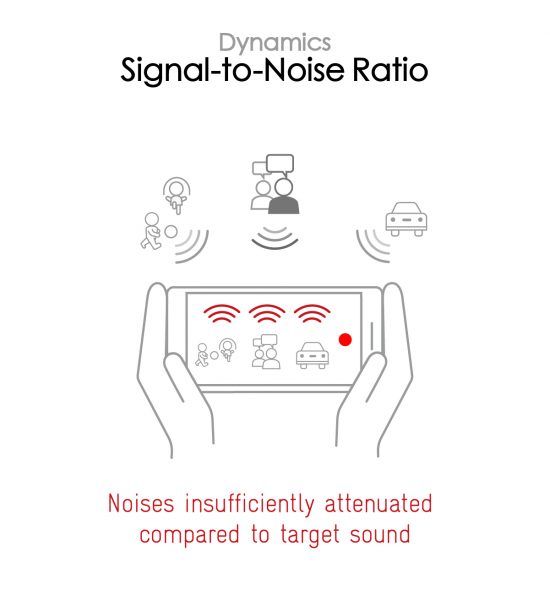

Spatial
Fairphone 4
159
The sub-attributes for spatial tests include pinpointing a specific sound's location, its positional balance, distance, and wideness on the recorded audio files.
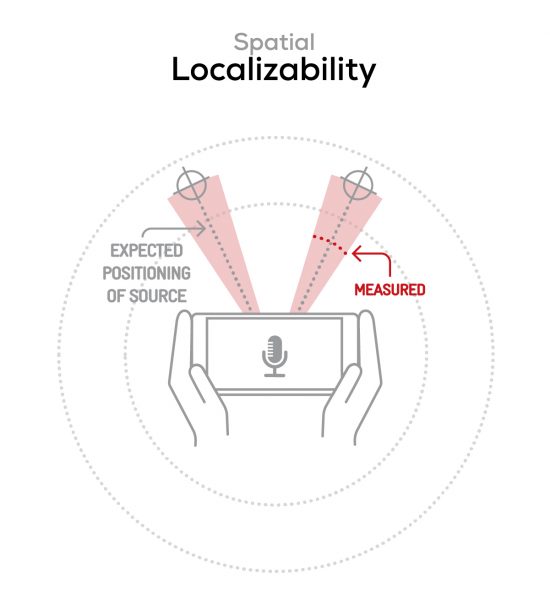
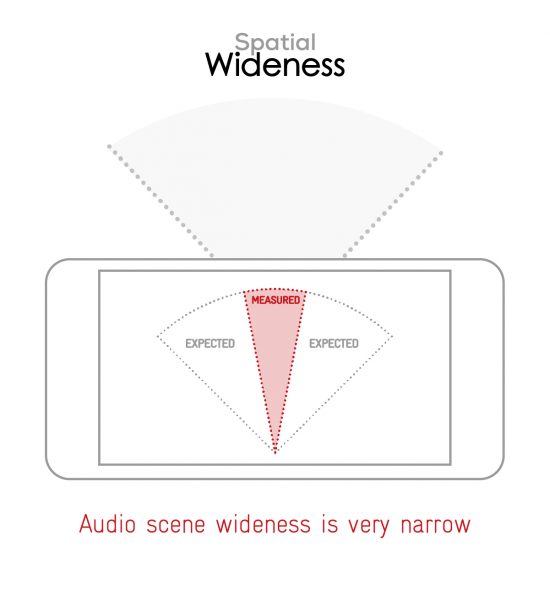

Volume
Fairphone 4
170
The Volume score represents how loud audio is normalized on the recorded files and the how the device handles loud environments, such as electronic concerts, when recording.
| Meeting | Life Video | Selfie Video | Memo | |
| Fairphone 4 | -39.2 LUFS | -27.7 LUFS | -25.4 LUFS | -32 LUFS |
| Oppo Reno6 Pro 5G (Snapdragon) | -21.6 LUFS | -16.6 LUFS | -15.4 LUFS | -17.1 LUFS |
| Oppo Find X3 Neo | -19.3 LUFS | -17 LUFS | -16.4 LUFS | -15.7 LUFS |

Artifacts
Fairphone 4
145
The Artifacts score measures the extent to which the recorded sounds are affected by various types of distortions. The higher the score, the less the disturbances in the sound are noticeable. Distortions can occur because of sound processing in the device and the quality of the microphones, as well as user handling, such as how the phone is held.

Background
Fairphone 4
166
Background evaluates how natural the various sounds around a voice blend into the video recording file. For example, when recording a speech at an event, the background should not interfere with the main voice, yet it should provide some context of the surroundings.
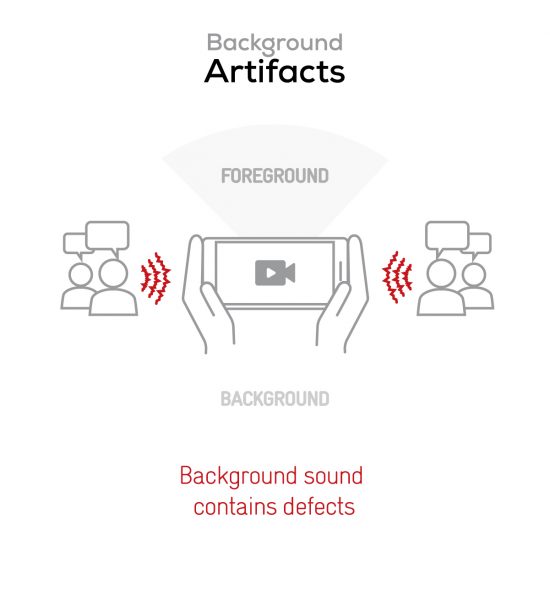
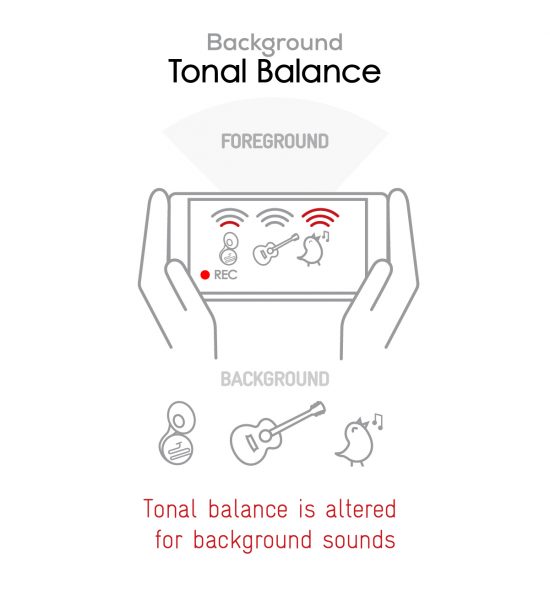



DXOMARK encourages its readers to share comments on the articles. To read or post comments, Disqus cookies are required. Change your Cookies Preferences and read more about our Comment Policy.